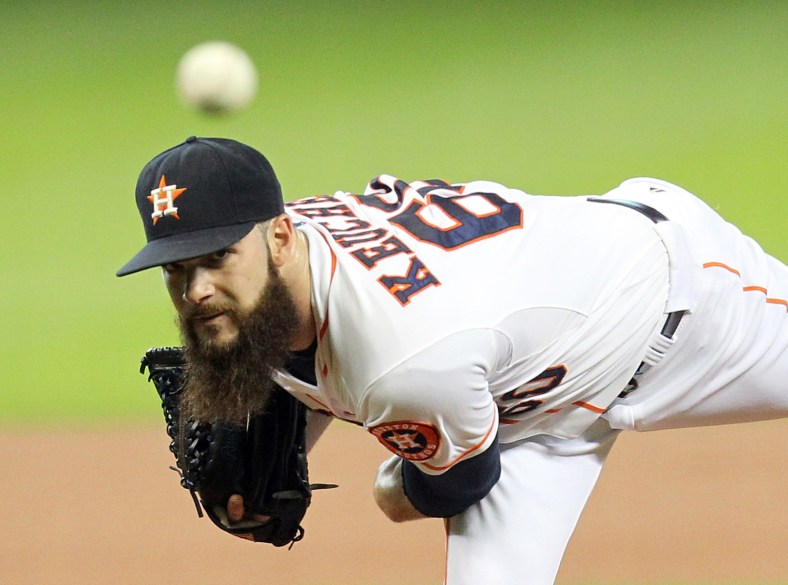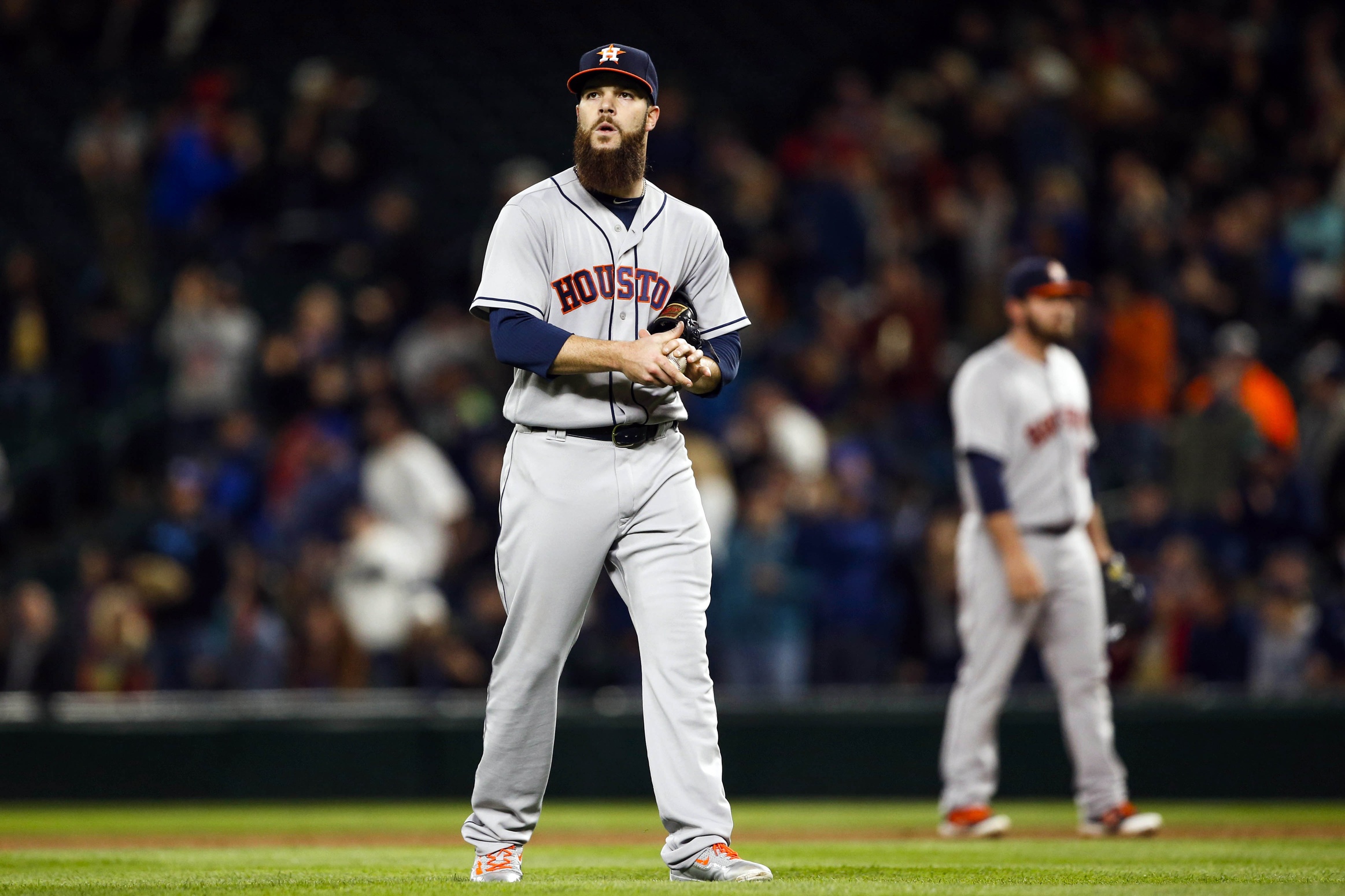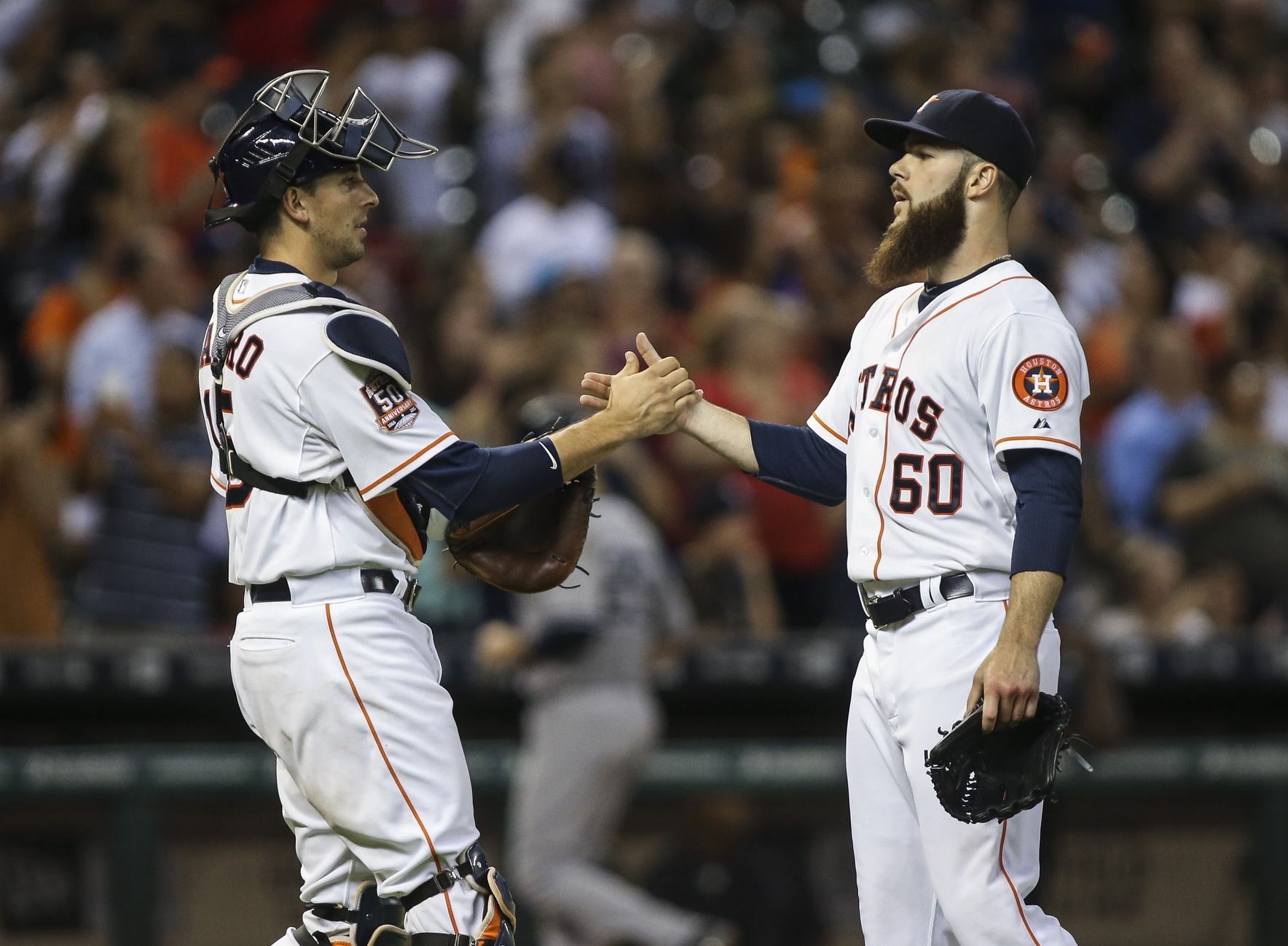
The Houston Astros entered the season on a short list of favorites in the American League, so their 9-18 start is raising more than a few eyebrows. The same can be said for their star pitcher, Dallas Keuchel.
Whether we’re comparing his 2016 season to the entire 2015 campaign or just 2015’s first six games, the reigning American League Cy Young Award winner’s 2016 stats just don’t compare.
Dallas Keuchel starting out a bit colder this year than he did in 2015. #Astros pic.twitter.com/Kds0SCx94q
— Sportsnaut (@Sportsnaut) May 4, 2016
As you can see, those numbers aren’t just inflated by one or two bad starts. The fact that Keuchel has only tossed two quality starts in six appearances indicates that the two good outings are the true outlier.
So, what exactly is going wrong with Dallas Keuchel?
Drop in velocity
Any time a pitcher’s production drops, his velocity is the first thing that should be looked at. Keuchel (Per Fangraphs) has experienced a dip in velocity over the season’s first six starts.
Dallas Keuchel's velocity appears to be trending down. #Astros pic.twitter.com/iD4JOc0VRU
— Sportsnaut (@Sportsnaut) May 4, 2016
Now, in the case of Keuchel, a dip in velocity may not seem like a big deal. By modern standards, any average fastball velocity below 90 is well below average. So, even when Keuchel was enjoying his dominant 2015 run, his fastball wasn’t exactly overwhelming.
Still, a dip in velocity signals a tired arm. If we include last year’s postseason, Keuchel threw 246 innings in 2015. His previous career high was 200.
So, the dip in velocity isn’t exactly coming out of left field, and it isn’t completely crazy to think that he might be tired.
Walks

This is a real problem. Really, anything above three walks per nine innings is high. If a pitcher has a live arm and strikes a lot of hitters out, he might be able to get away with being more wild. But 4.4 walks per nine is excessive for anyone, regardless of how many strikeouts he gets.
For a pitcher like Keuchel, it’s even worse.
The 8.4 K/9 that he averaged last season is a good total, but it’d be inaccurate to call him a “strikeout pitcher.” By comparison, 2015’s National League Cy Young Award winner, Jake Arrieta, averaged 9.3 K’s per nine innings. Keuchel’s runner up in the American League, David Price, had a K/9 rate of 9.2 in 2015.
All pitchers need to throw strikes, as there’s absolutely no defense for a walk. Pitchers like Keuchel have an even greater need, as they can’t rely on being bailed out with big strikeouts once men are on base.
Thus far, Keuchel has been the opposite. He’s walked a lot of hitters and then allowed big contact with men on base. When that happens, ugly numbers follow.
Maybe 2015 was the outlier
We’ve already compared Keuchel’s current numbers to what he did in 2015 and obviously, they aren’t close. But Keuchel’s Cy Award-winning season was certainly surprising. So, what kind of a pitcher was he before his breakout year of 2015?
What kind of pitcher was Dallas Keuchel before his breakout 2015 campaign? #Astros pic.twitter.com/WRtFbHAuJc
— Sportsnaut (@Sportsnaut) May 4, 2016
To be completely fair, the 2014 season indicated that Keuchel was a pitcher on the rise. Still, those overall 2012-2014 numbers aren’t exactly superstar caliber.
It’s certainly plausible that Keuchel was simply a good pitcher who had a great season. Right now, he’s a good pitcher who is having a bad season.
Given how good he was in 2015, a season of regressing to the mean isn’t exactly impossible to believe.
Can the problem be fixed?
If he continues to walk people at this rate (4.4 walks per nine innings), the answer is no.
Walks are a big no-no for pitchers, and that rate will spell a miserable season. With that said, we can safely assume Keuchel will start throwing strikes at a better rate. As his numbers show, control hasn’t really been a problem for him since an abbreviated rookie season.
Baseball is a long season, and generally speaking, overreacting to what’s happened in the first month of play is a fool’s game. Keuchel won’t likely be this bad all year, just like Nolan Arenado will not likely maintain his current 69 home run pace all year.
Things are likely to even out.

The problem is that Keuchel isn’t the kind of pitcher who should just be evening out. He’s the reigning Cy Young Award winner and the best pitcher on a team that figured to be a World Series contender. Those kind of pitchers need to be aces, and to that end, Keuchel’s problems are a little too strong to ignore.
Over the last two seasons, Keuchel never had a month with an ERA worse than 3.71. Now he’s up above 5.00.
Yes, there are some positives to look at, notably that he’s allowed only one home run.
Still, as the weather heats up through the summer, baseball tends to favor the hitter more and more. If he’s doing this in the normally relatively pitcher-friendly time of April and early May, it’s hard to imagine Keuchel reverting to Cy Young form in the more hitter-friendly conditions.
That’s not to say that Keuchel will continue to pitch this poorly. Slumps do happen over the course of a 162-game season. But there’s not a lot of evidence to suggest Keuchel will be again be a consistent ace throughout the rest of 2016.